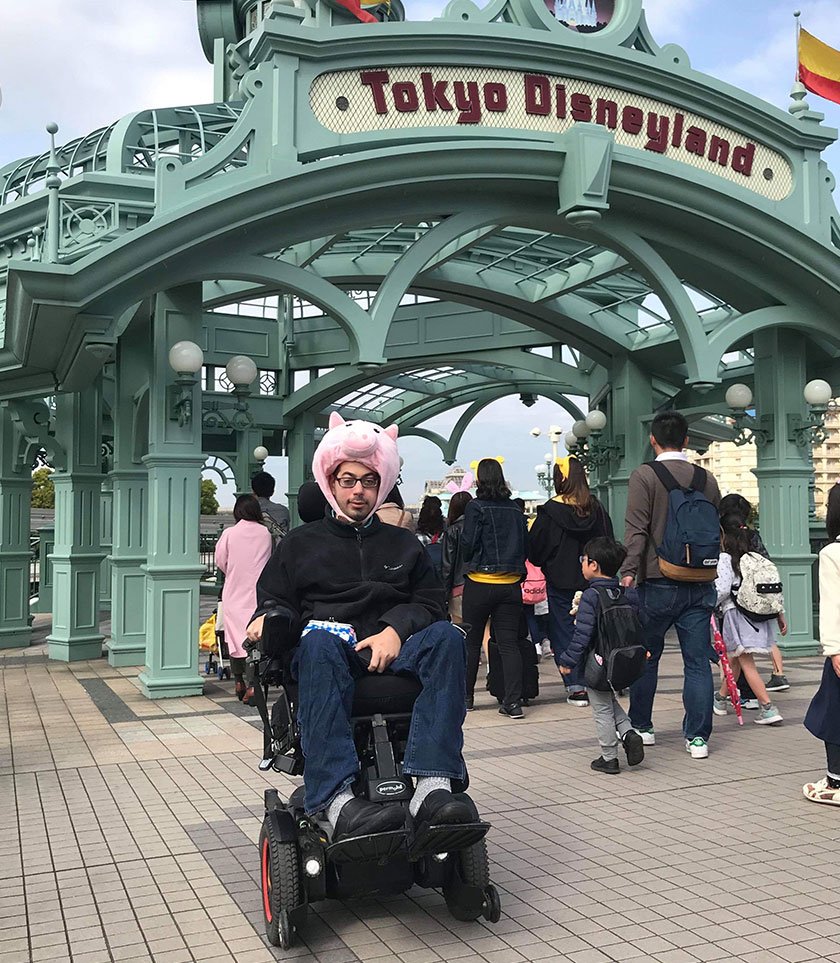By Mark Bookman
This is part 5 of a 5 part series. You can read part 1 here, part 2 here, part 3 here and part 4 here.
Concluding Remarks
My time at Tokyo Disneyland was otherworldly. As soon as I crossed the threshold into the “Kingdom of Dreams and Magic,” I entered a wonderful space where my desires came alive only to be immediately snatched away by the specter of inaccessibility. While I was unable to live out many of my fantasies due to my inability to transfer to a park-issued wheelchair, I suspect that other persons with disabilities may not necessarily have the same experience. Going forward, I hope that Tokyo Disneyland does its best to resolve the issues that I have raised throughout this five-article series including but not limited to: 1) problems related to descriptions of accessibility; 2) problems related to gathering guest feedback; and 3) problems related to employee training. Toward that end, I will now propose a series of recommendations for improving park accessibility, building on the insights that I have provided in the takeaways and travel tips section of each article.
Descriptions of Accessibility
Descriptions of accessibility can be tricky. How much or how little information should the park (or any other entity) include when developing access guides? Who decides what information should be included? And why? These questions create headaches for many facility administrators. No matter how benevolent their intentions, it is often the case that facility administrators leave people behind as they make their decisions. Take Disney’s decisions regarding “wheelchair access.” While I thought that I would be able to use many of the rides and attractions at Disney, I later came to realize that Disney’s definition of “wheelchair access” was extremely narrow. Could I have benefited from knowing Disney’s definition ahead of time? Probably. But how much could I reasonably expect Disney to tell me? Maybe the length, width, and height of their park-issued wheelchairs? Or perhaps the weight of those chairs and the materials that they are made out of? Even with all of that information, I may not have been able to make an informed judgment call about whether I personally could transfer in and out of their chairs. So, what could they have done?
Gathering Guest Feedback
One solution to the problem of describing access is to create a flexible database by gathering guest feedback. By allowing guests to ask questions and share the results of their inquiries with one another, Disney could assist its guests in making informed decisions about their stay. By creating a public forum for sharing opinions, the entertainment giant could gather information and improve its accessibility for persons with disabilities (and other demographics in need of accommodation). This would not only boost overall satisfaction with the park, but also allow for a streamlining of human resources so that guests could reach more attractions (and therefore spend more money). Of course, creating a public forum is not without costs. Disney would have to suffer the financial burden of setting up a space for guests to converse with one another, either online or in person. Perhaps of greater consequence would be the costs of bad publicity that might arise when access issues are brought to the fore through guest conversations. Still, I would argue that these costs are trivial compared to the financial incentives to be gained by becoming more diverse and inclusive.
Employee Training
If Disney were to create a public forum for persons with disabilities (and other marginal groups), it would surely receive complaints about park policy and its implementation. As facility employees are the enforcers of park policy, their role would almost certainly come under scrutiny. Based on my experience, many employees lack adequate training with respect to providing accommodations and support. This is not necessarily their fault. In fact, I would argue that Disney is to blame for failing to establish and maintain a system of minimum standards and reasonable accommodation. By establishing new feedback channels like the public forum mentioned above, Disney could work with its patrons to construct a minimum standard of accessibility that benefits as many as possible. They could also gather information about the kind of flexibility necessary for ensuring that persons whose bodies and minds do not conform to their minimum standard could still enjoy their park.
Final Thoughts
As evidenced by this five-article miniseries, my time at Tokyo Disneyland afforded me an opportunity to reflect on many accessibility issues that arise when persons with disabilities travel (both domestically and abroad). I encourage all of my readers to think through these issues with respect to your own destinations. What does accessibility look like where you are? Why does it look that way? And how can it be improved so that it accommodates as many people as possible? By thinking through these questions, we can begin to create a more diverse and inclusive society.
Mark Bookman received his B.A. in Global Interdisciplinary Studies from Villanova University in 2014 prior to researching Buddhist Philosophy in Japan as a Fulbright Fellow. He earned his M.A. in East Asian Languages and Civilizations from the University of Pennsylvania in 2016, where he currently studies the history of disability in Japan as a PhD Candidate. At present, Mark is working with experts on disability and barrier-removal at the University of Tokyo’s Research Center for Advanced Science and technology as a Japan Foundation Research Fellow.
Even though Mark keeps himself busy (VERY busy!) he has agreed to take on a role at Accessible Japan as a researcher and consultant.
You can read more about Mark on his website https://bookmanresearch.com/


Responses